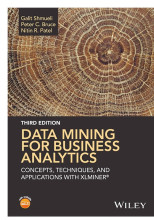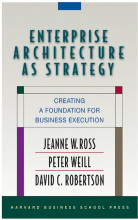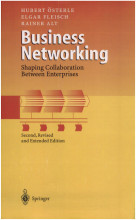Summary: The Adventures Of An It Leader, Updated Edition With A New Preface By The Authors | 9781633691674 | Robert D Austin, et al
- This + 400k other summaries
- A unique study and practice tool
- Never study anything twice again
- Get the grades you hope for
- 100% sure, 100% understanding
Read the summary and the most important questions on The Adventures of an IT Leader, Updated Edition with a New Preface by the Authors | 9781633691674 | Robert D. Austin; Shannon O'Donnell; Richard L. Nolan
-
1 CIO Role
This is a preview. There are 1 more flashcards available for chapter 1
Show more cards here -
Explain the three alignment components and alignment types
• Intellectual Alignment (Business-IT Strategy alignment)
• IT Alignment (IT Strategy-IT infrastructure alignment)
• Operational Alignment (Organizational-IT infrastructure alignment) -
1.1 Business Strategy
This is a preview. There are 1 more flashcards available for chapter 1.1
Show more cards here -
What is the main role of the CIO
To align business strategy, IT strategy, IT infrastructure & processes and organizational infrastructure & processes. -
Which two generic strategies are argued by Porter?
Differentiation and cost leadership (generic strategies are the extremes of a continuum, and firms compete across the entire spectrum. -
What is differentiation? And what is costleadership
Differentiation: Products and services with unique features
superior designs--> innovative research and development, superior engineering, customer intimacy, superior customer service, and brand image. Example Cadillac (with high-end price)
Cost leadership: lowest average unit costs in the industry-->
cost minimization, operational excellence, operating the same activities and achieving the same outcomes more efficiently than rivals Example Chevrolet (low price cars) -
Which three generic strategies are argued by miles and snow?
Defender, prospector and analyzer -
What is the difference between a defender, prospector and analyzer?
Defender: Eschew changes (most stable of the three) -- high-quality but standard products or services at low price. -- operational efficiency and economies of scale
Prospector: create changes in its market -- new product/market -- innovativeness and flexibility
Analyzer: follow changes(the prospector) very quickly -- a stable domain of core products but very quickly introducing competitive, and occasionally better products after prospector.-- combination of the two a dual technological core, with stable and flexible components . -
Explain the three configurations by using high medium low for:DefensivenessRisk AversionAggressivenessProactivenessAnalysisFuturity
Defenders Prospectors Analyzers
Defensiveness H L M
Risk Aversion H L H
Aggressiveness M H M
Proactiveness L H M
Analysis M M H
Futurity H M M -
1.3 IS Infrastructure and Processes
This is a preview. There are 1 more flashcards available for chapter 1.3
Show more cards here -
What are examples of IS Infrastructure and Processes
Is processes, business applications, Is roles (users), Is data and user interfaces. -
What is an information system (IS)
a system that facilitates gathering, processing, storing, using, and disseminating information.
An IS can be paper-based or totally automated by IT where no human intervention is required. -
What is the difference between Operational support systems (also transaction support systems), Market information systems, Strategic decision support systems and Inter-organizational systems
monitoring and controlling the day to-day operations -- operational efficiency
monitoring product sales, product trends, or market trends -- flexibility in responding to the market
long-term planning, making strategic decisions, and high levels of internal and external analysis -- futurity, proactiveness, and analysis
Exchange of data between an organization and its suppliers, customers, and government -- Coordination of companies
- Higher grades + faster learning
- Never study anything twice
- 100% sure, 100% understanding
































